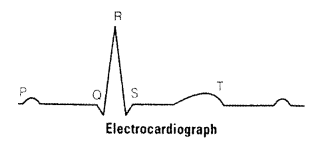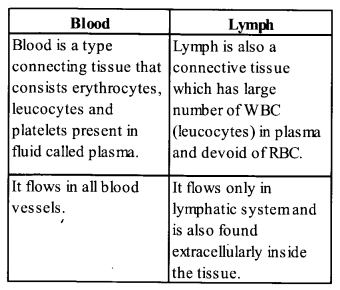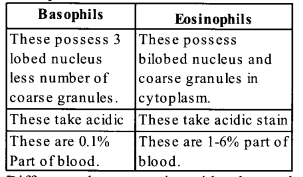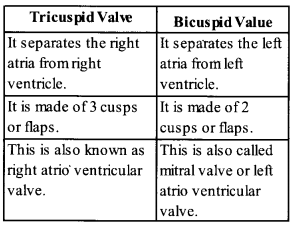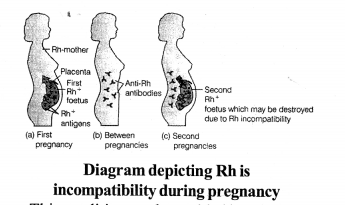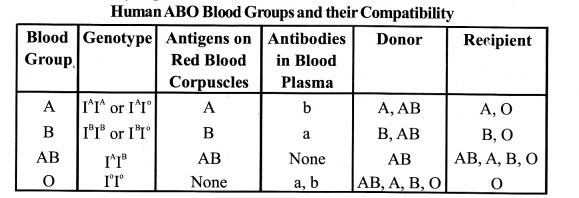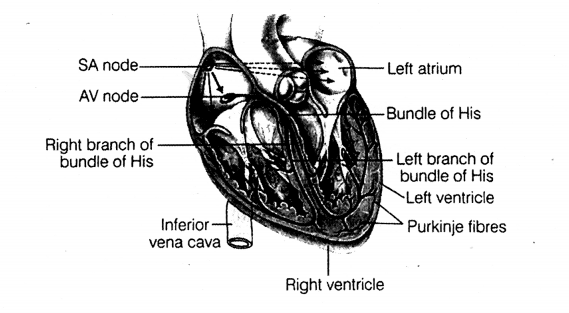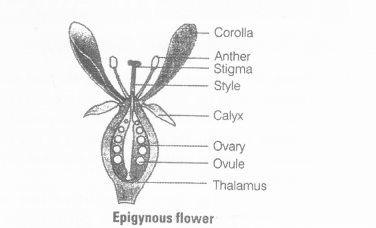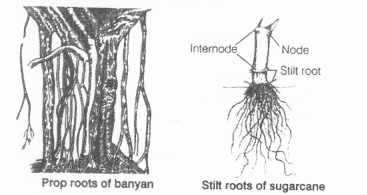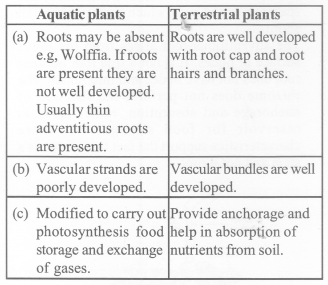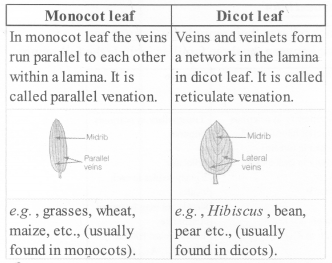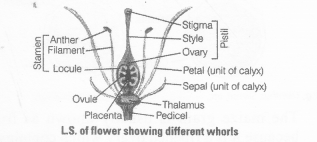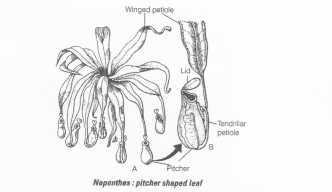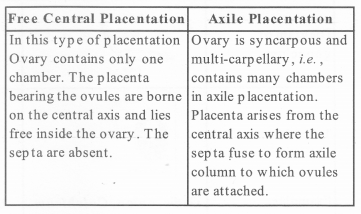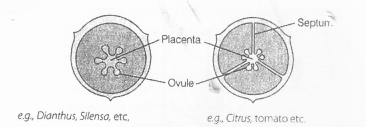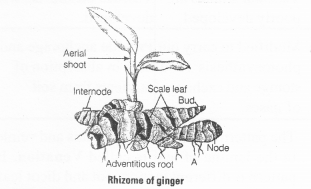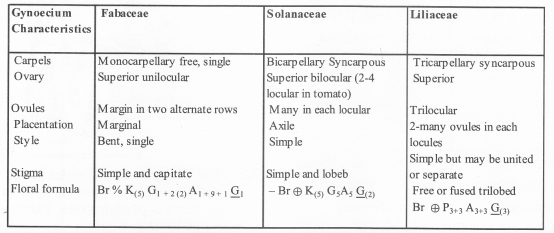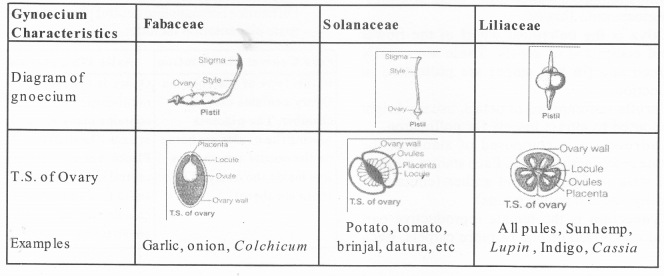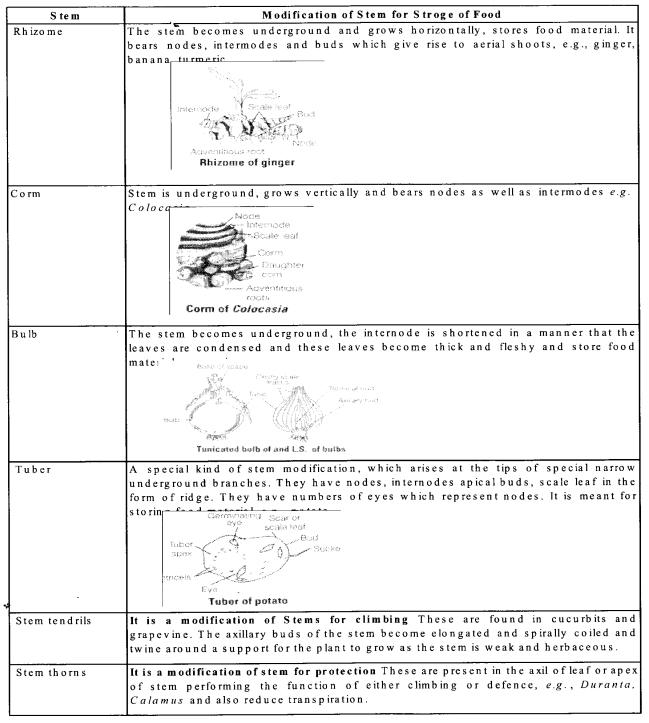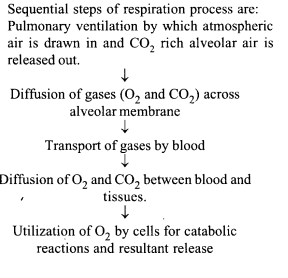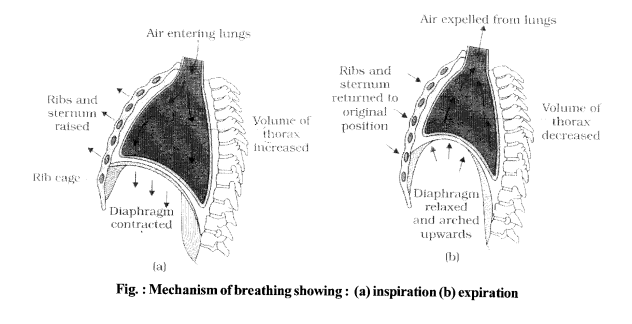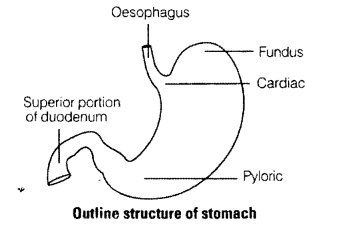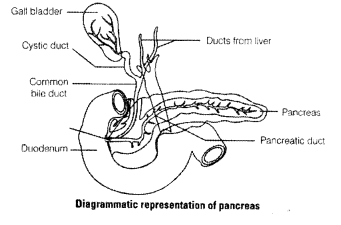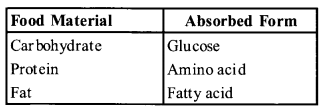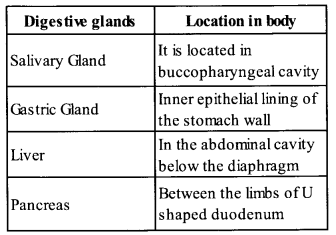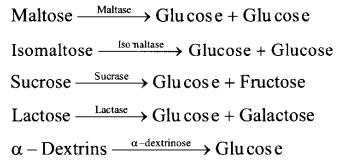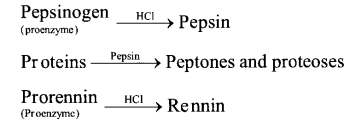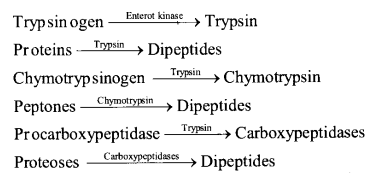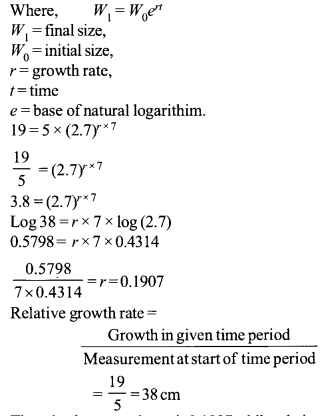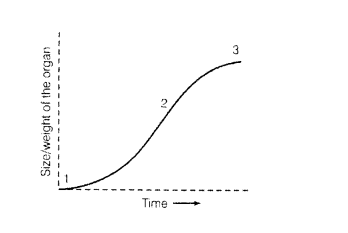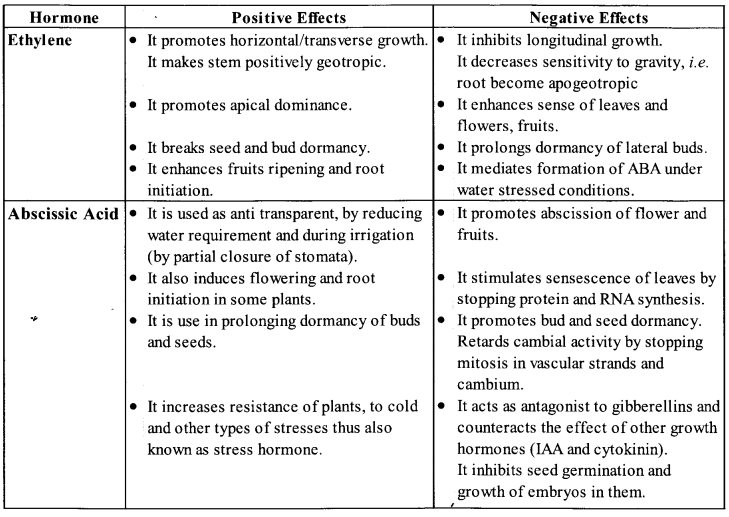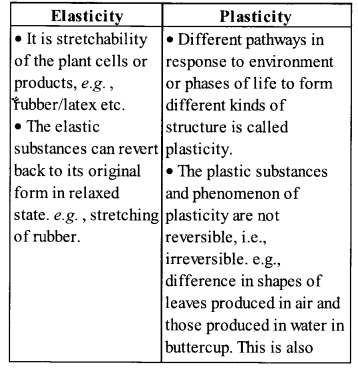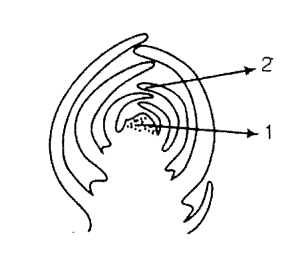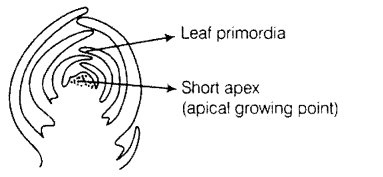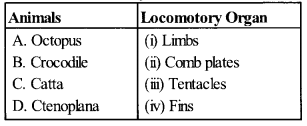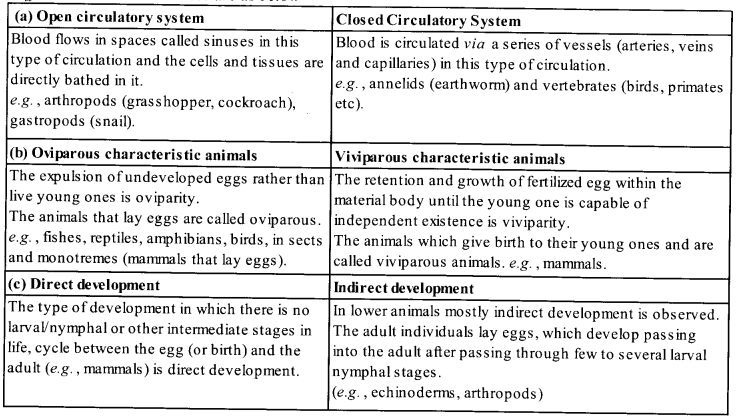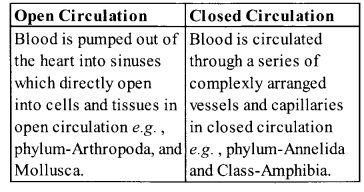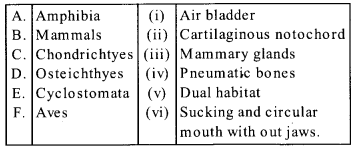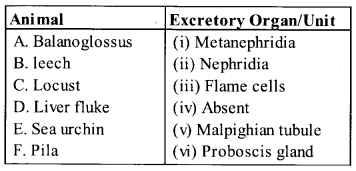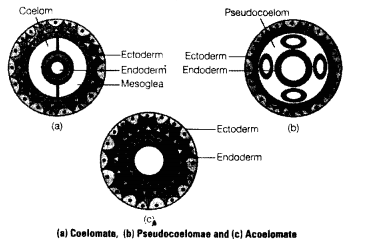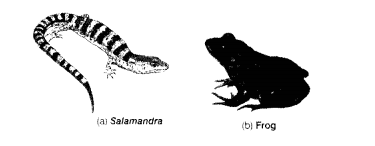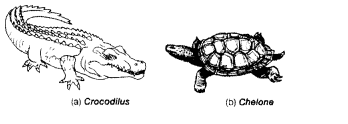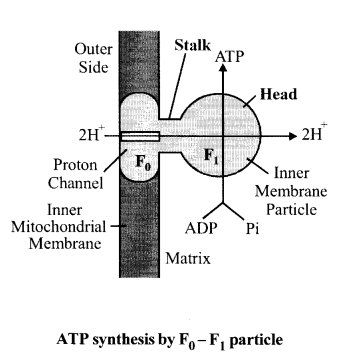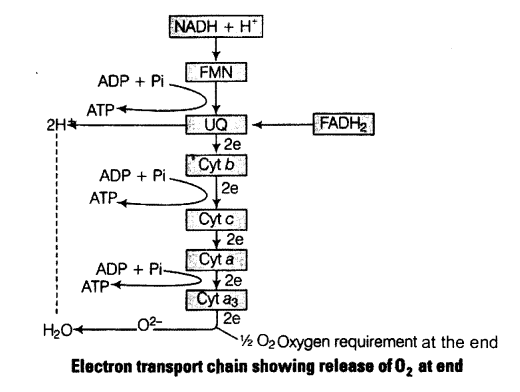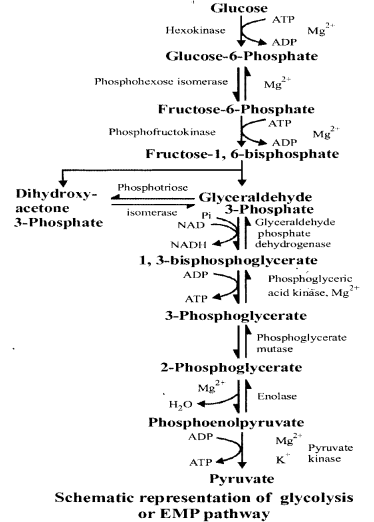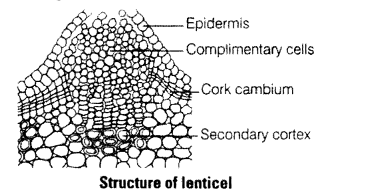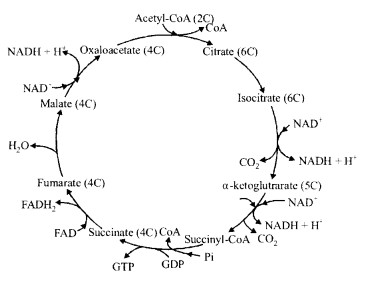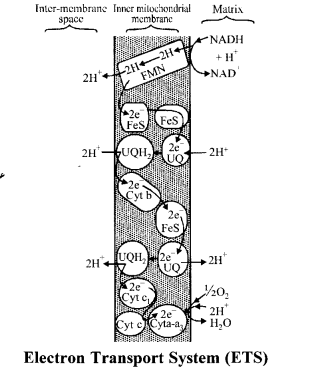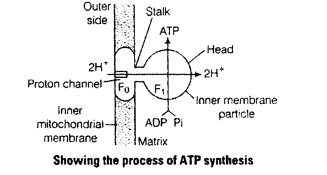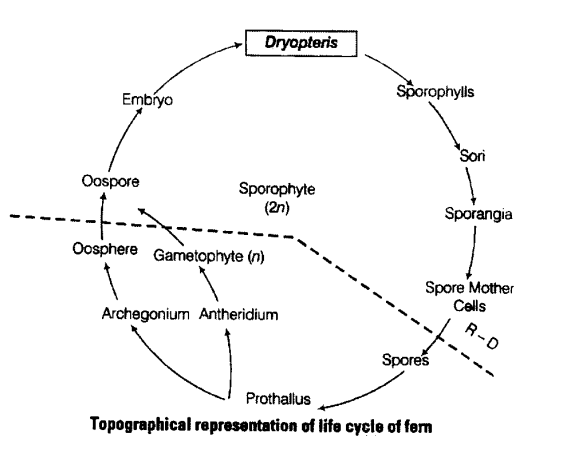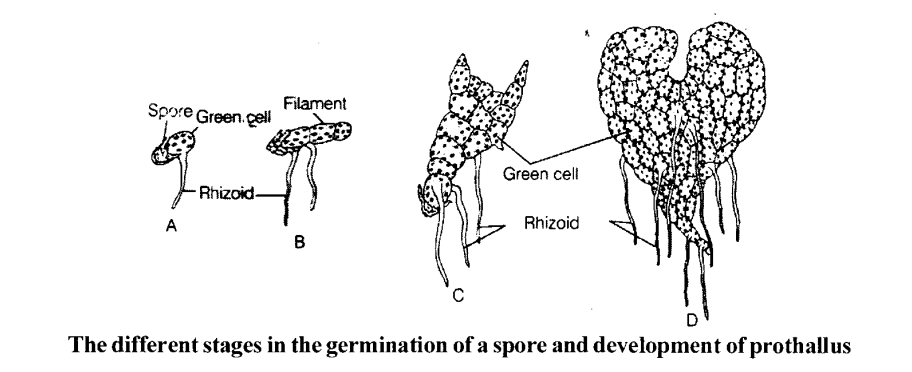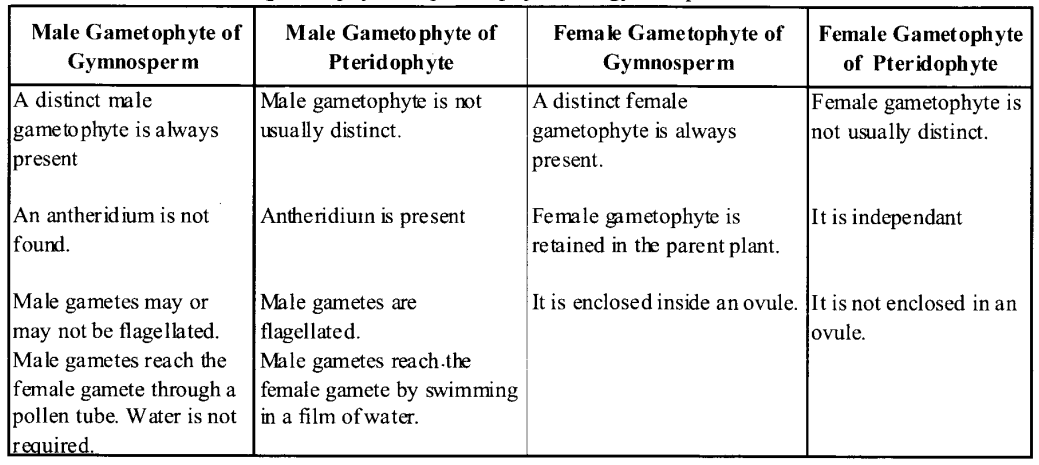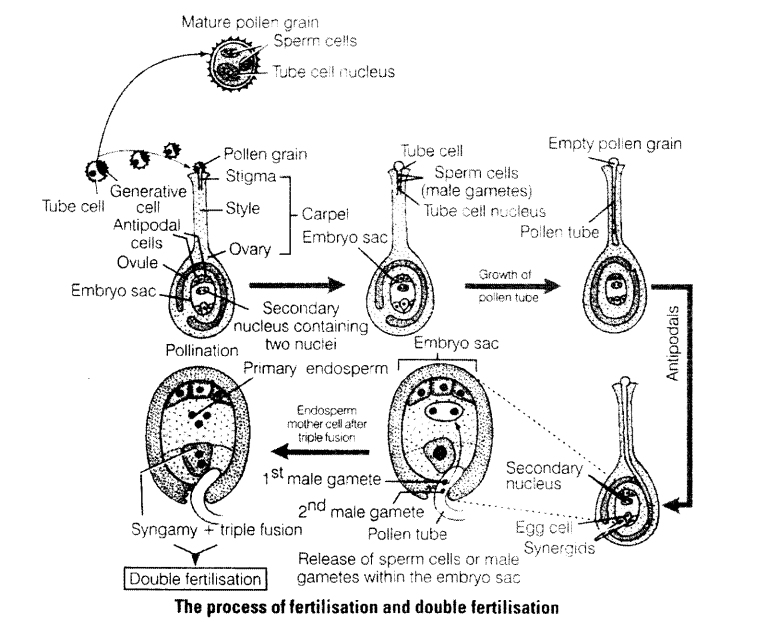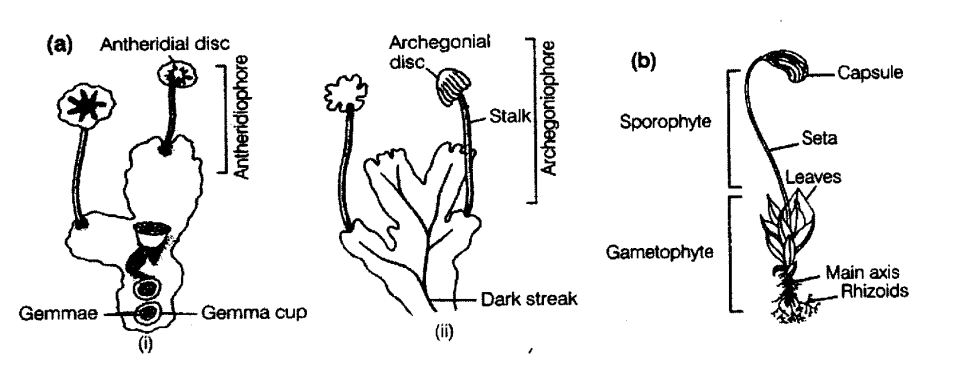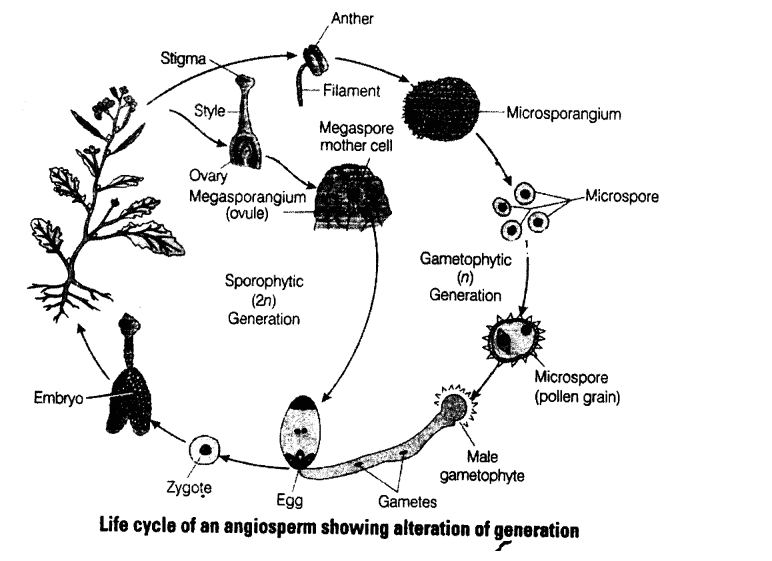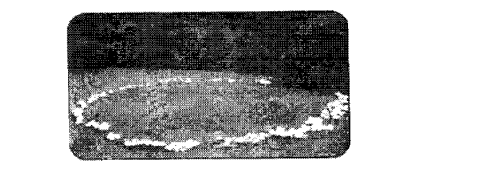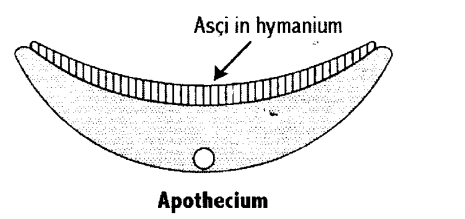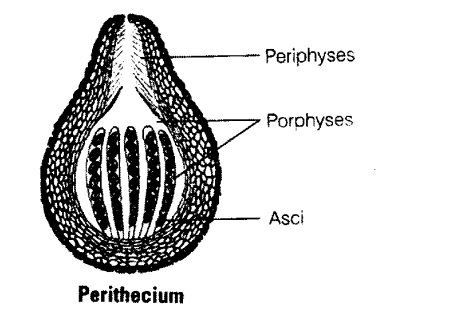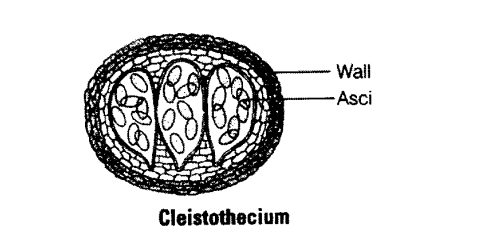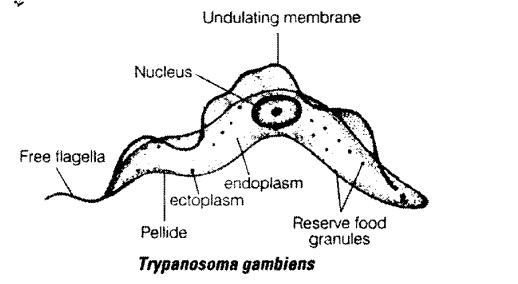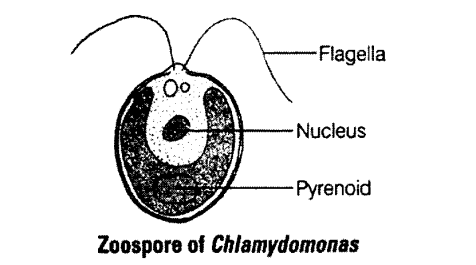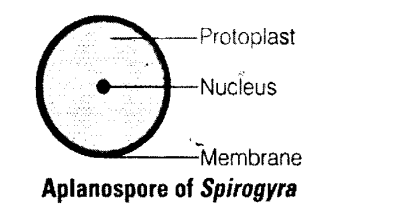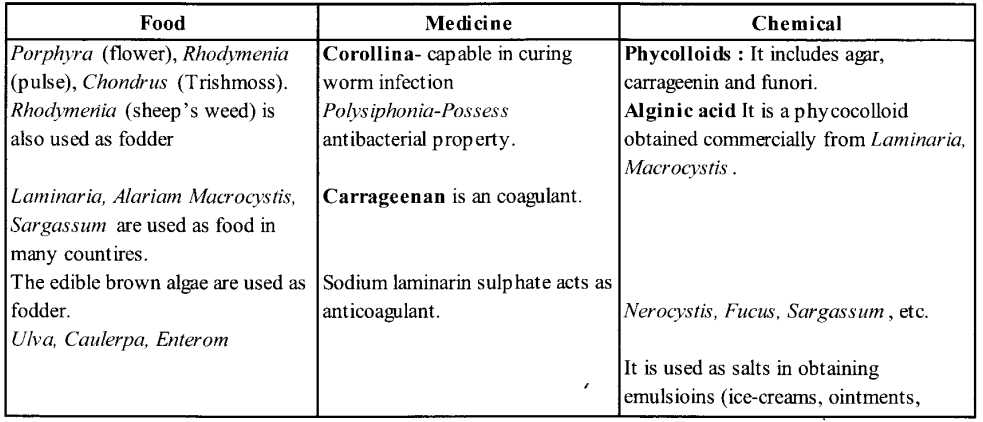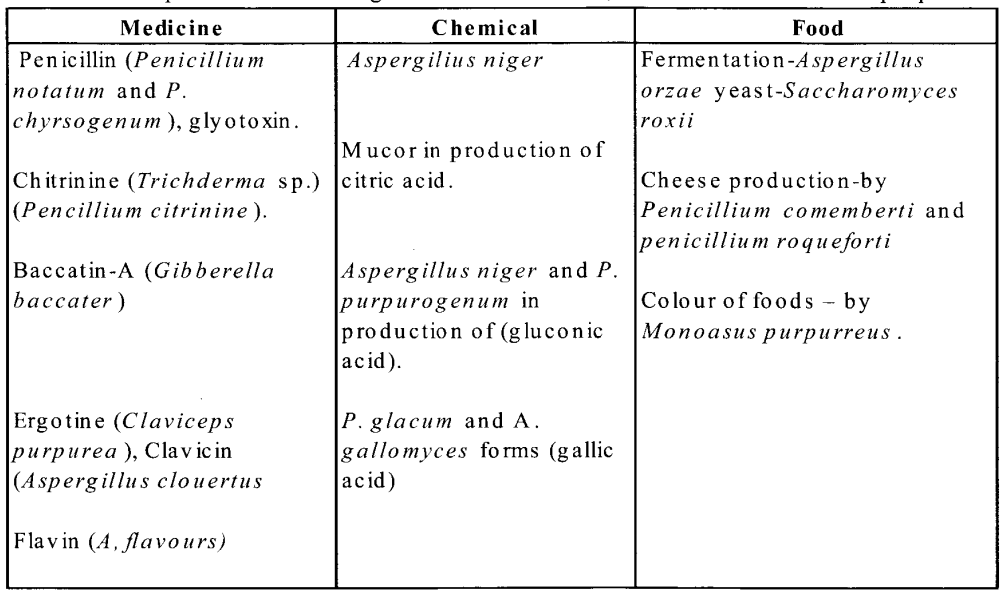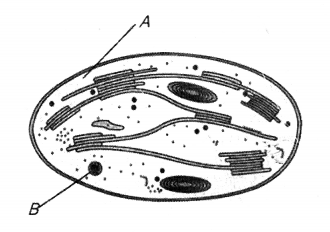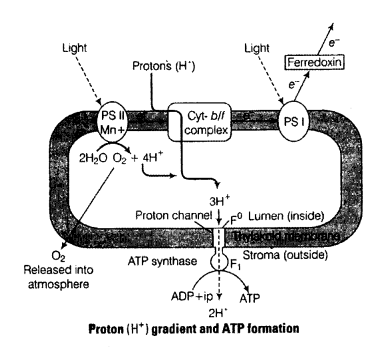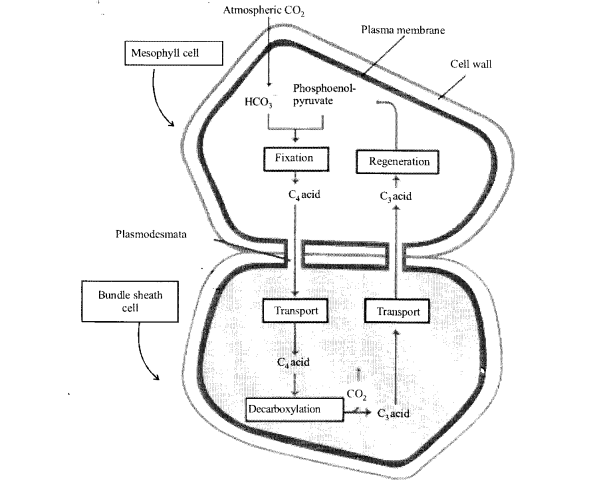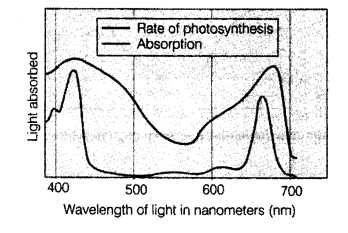NCERT Exemplar Solutions for Class 11 Biology Chapter 6 Anatomy of Flowering Plants
These Solutions are part of NCERT Exemplar Solutions for Class 11 Biology. Here we have given NCERT Exemplar Solutions for Class 11 Biology Chapter 6 Anatomy of Flowering Plants.
VERY SHORT ANSWER QUESTIONS
Question 1.
Product of photosynthesis is transported from the leaves to various parts of the plants and stored in some cell before being utilised. What are the cells/tissues that store them?
Solution:
The first product of photosynthesis is glucose. It is highly reactive molecule and gets converted into a disaccharide-sucrose for storage.
The food gets stored in specialised prarenchymatous cells present either in roots and stems or in their modifications in the form of a polysaccharide called starch.
Question 2.
Protoxylem is the first formed xylem. If the protoxylem lies next to pholem what kind of arrangement of xylem would you call it?
Solution:
The condition of the xylem arrangement if protoxylem lies next to phloem is called as exarch. It is found in roots.
Question 3.
What is the function of phloem parenchyma?
Solution:
The main function of phloem parenchyma is to store food and other substances like resins, latex and mucilage. They help in transport of food as well.
Question 4.
What is present on the surface of the leaves which helps the plant prevent loss of water but is absent in roots?
Solution:
Cuticle is a waxy coating covering the entire surface of the plant body. It is absent in roots, it prevents the loss of water through the surface of the plant.
Question 5.
What is the epidermal cell modification in plants which prevents water loss?
Solution:
Bulliform or motor cells are modified epidermal cells meant for checking water loss present in monocots or grasses. They help in shutting down stomata and thus reduce water loss through transpiration under stressed conditions.
Question 6.
What constitutes the cambial ring?
Solution:
The cambium present in between the xylem and phloem is called fasicular or intrafasicular cambium and the newly formed cambium between the two vascular bundle is known as interfascular cambium. Both type of cambium combine to form the cambial ring.
Question 7.
Give one basic functional difference between phellogen and phelloderm.
Solution:
Phelloderm is a permanent tissue while phellogen is a meristematic tissue. Phellogen (cork cambium) develops from the cortical cells, sometimes from pericycle cells. These cells actively divide and forms phellem on outerside and phelloderm (cortex cells) innerside so phelloderm originates from phellogen.
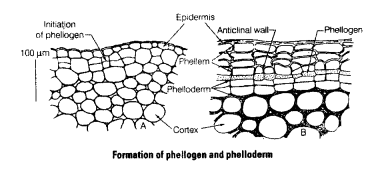
Question 8.
Arrange the following in the sequence you would find them in a plant starting from the periphery-phellem, phellogen, phelloderm.
Solution:
The outer most layer is phellem or cork followed by phellogen (cork cambium) which in turn is followed by phelloderm (secondary cortex.
Question 9.
If one debarks a tree, what parts of the plant is being removed?
Solution:
Debarking refers to removal of bark, i.e., all tissues exterior to the vascular cambium, including secondary phloem. Bark includes periderm (phellogen, phellem and phelloderm) and secondary phloem.
SHORT ANSWER QUESTIONS
Question 1.
While eating peach or pear it is usually seen that some stone like structures get entangled in the teeth, what are these stone like structures called?
The edible part of the peach or pear pome fruit for the fleshy thalamus.
Solution:
The stone cells are present in the pulpy part of fruit of peach and pear. These are sclerenchymatous cells and which are dead in nature. They provide mechanical support to the soft tissue.
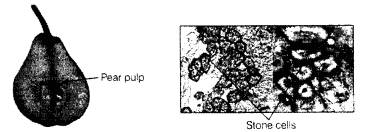
Question 2.
What is the commercial source of cork? How frs it formed in the plant?
Solution:
The source of commercial cork is the cork tissue of Quercus suber, which yields bottle cork. Cork is formed by cork cambium or phellogen cell, cells of cork cambium divide periclinally, cutting cells towards the inside and outside. The cells that cut off towards the outside become suberised and dead.
These are compactly packed in radial rows without intercellular spaces and form cork of phellem. Cork is impervious to water due to presence suberin and provides protection to the underlying tissues.
Question 3.
Below is a list of plant fibres. From which part of the plant these are obtained.
(a) Coir
(b) Hemp
(c) Cotton
(d) Jute
Solution:
(a) Coir is a natural fibre obtained from coconut husk. It is the fibrous mesoderm of the fruit of Cocos nucifera (coconut).
(b) Hemp fibre is obtained from the stems of Cannabis sativa. It is the bast fibre (soft or stem fibre) obtained from secondary phloem.
(c) Cotton fibre is the epidermal growth in cotton (Gossypium hirsutum) seed. It is an elongated structure made up of cellulose.
(d) Jute is a natural bast fibre made up of cellulose and lignin obtained from Corchorus capsularis.
Question 4.
Epidermal cells are often modified to perform specialised functions in plants. Name some of them and function they perform.
Solution:
The epidermal tissue system comprises of one cell thick layer of epidermal tissue and forms the outer most covering of the whole plant body. ,
Modification of Epidermal Cells
Following are the modifications of the epidermal tissue (i) root hair
Structure
These unicellular hairs are the extensions of epidermal cell of roots in the root hair zone.
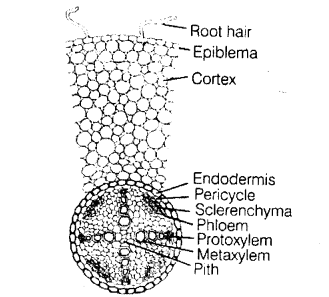
Function
They increase the surface area for absorption of water and minerals.
(ii)Epidermal Appendages
Structure
These are called trichomes and are epidermal cell modifications. There any be unicellular or multicellular.
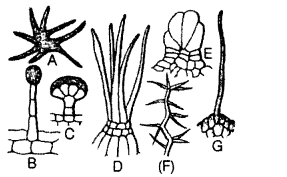
Appendages of epidermis of leaves
A-Stellate hair of a Alyssum
B-Glandular hair of Pelargonium
C-Short glandular hair of Lavandula
D-Floccose hair of Malva
E-Glandularhair of solanum
F-Urtivating hair of Verbascum
Function
They produce some glandular secretions.
Question 5.
The lawn grass (Cyandon dactyl on) needs to be mowed frequently to prevent its overgrowth. Which tissue is responsible for its rapid growth?
Solution:
The rapid growth of mowed lawn grass is due to meristematic tissue. When the apex of grass is cut frequently, it leads to the growth of the lateral branches, that makes it more bushy.
Question 6.
Plants require water for their survival. But when watered excessively, plants die. Discuss.
Solution:
Plants use water for several metabolic process as photosynthesis, transpiration and respiration. Plants when watered in excess die because excess water removes the air trapped between the soil particles.
The plant roots do not get 02 for respiration. Once cells of root die, water and mineral absorption is stopped and this leads to gradual death of a plant.
Question 7.
A transverse section of the trunk of a tree shows concentric rings which are known as growth rings. How are these rings formed? What is the significance of these rings?
Solution:
- The concentric growth rings are called annual rings. These rings are formed due to the secondary growth.
- Secondary growth occurs due to the activity of cambium which is a meristermatic tissue in dicot trees.
- The rate of activity of cambium is more in spring so wood formed has larger wider xylem cells, whereas wood formed in autumn has narrower and smaller xylem elements.
- This results in the formation of two rings called growth rings.
- By counting these rings, age of the tree can be determined. This branch of science is known as dendrochronology or growth ring analysis.
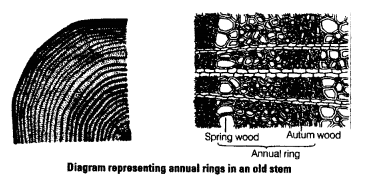
Question 8.
Trunks of some of the aged tree species appear to be composed of several fused trunks. Is it a physiological or anatomical abnormality? Explain in detail.
Solution:
The appearance of several fused trunks is anatomical abnormality. It is an abnormal type of secondary growth where a regular vascular cambium or cork cambium is not formed in its normal position. Anomalous secondary growth produces cortical and medullary vascular bundles in case of old tree trunks. Thus, the additional or accessory vascular bundles given appurtenance of several fused trunks.
Question 9.
What is the difference between lenticels and stomata? The gaseous exchange in all plants. Occurs by means of several openings present in the plant body.
Solution:
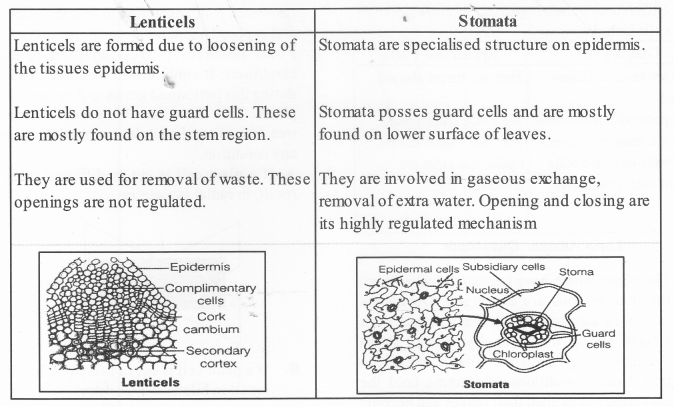
Question 10.
Write the precise function of
(a) sieve tube
(b) interfascicular cambium
(c) collenchyma
(d) aerenchyma
Solution:
Sieve tube It’s function is to transport of synthesised food throughout the plant. It is present in the phleom tissue.
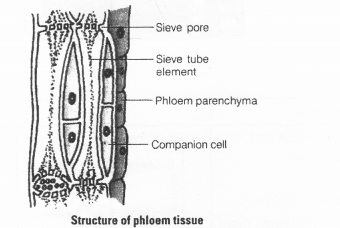
Interfascicular Cambium It is a kind of secondary meristermatic tissue present in between two vascular bundles. It is function is to bring about secondary growth in the dicot stem and root.
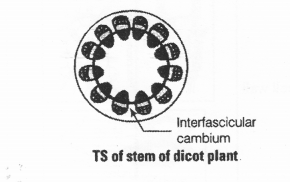
Collenchyma cells have angular thickening at corners. There function is to provide mechanical support to young growing herbaceous stem.
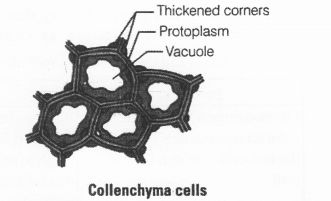
Aeronchyma is a specilised parenchyma having large air spaces. It provides buyoncy to the hydrophytic plants.
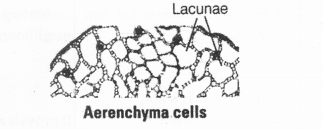
Question 11.
The stomatal pore is guarded by two kidney shaped guard cells. Name the epidermal cells surrounding the guard cells. How does a guard cell differ from an epidermal cell? Use a diagram to illustrate your answer.
Solution:
Stematal apparatus is a special modification of epidermal tissue present over leaf area. The epidermal cells surrounding the guard cells of stomata are called subsidiary cells include.
Differences between guard cells and epidermal cells include:
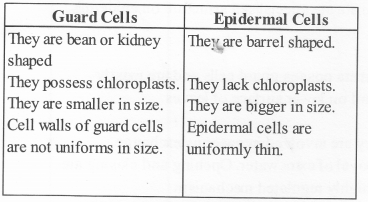
LONG ANSWER QUESTIONS
Question 1.
Is Pirns an evergreen Tree? Comment.
Solution:
- The plants which have persistent leaves in all the four seasons are evergreen. Deciduous plants in contrast completely loose their foliage during winter or dry season.
- Pinus belonging to gymnosperms is an evergreen tree. Under conditions of extreme cold the flowering plants shed their leaves and become dormant.
- In Pinus due to the presence of a thick bark thick needle-like leaves and sunken stomata to reduce the rate of transpiration the leaves we not shed.
- The cold areas are both physiologically and physically dry due to scanty rainfall, precipitation as snow, decreased root absorption at low temperature and exposed habitats.
- Pinus however is well adapted to such conditions. It continues to manufacture food during this period and grows to domiante other plants. This show that Pinus is an evergreen tree.
- It does not shed its leaves or needles under any condition.
Question 2.
Assume that a pencil box held in your hand, represents a plant cell. In how many possible planes can it be cut? Indicate these cuts with the help of line drawings.
Solution:
A. If a plant cell is cut in different plane if result, in radial symmetry.
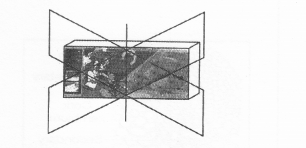
B. If a plant cell is cut in two equal halves it result in bilateral symmetry.
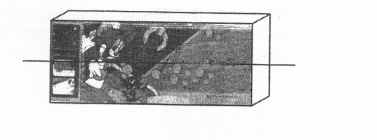
Question 3.
Each of thefollowing terms has some anatomical significance. What do these terms mean? Explain with the help of line diagrams.
(a) Plasmodesmata
(b) Middle Lamella
(c) Secondary wall
Solution:
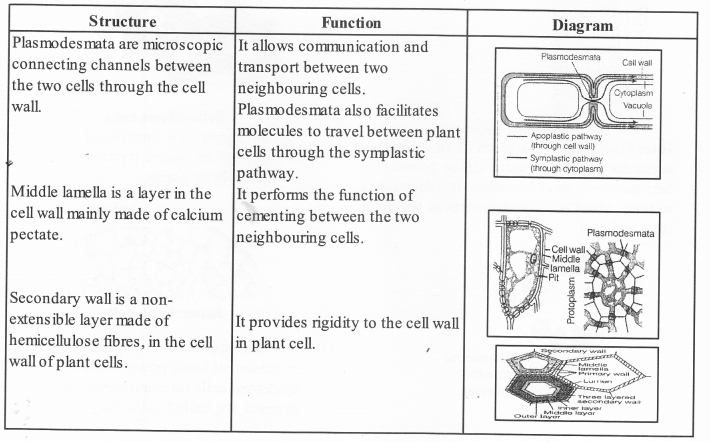
We hope the NCERT Exemplar Solutions for Class 11 Biology at Work Chapter 6 Anatomy of Flowering Plants, help you. If you have any query regarding NCERT Exemplar Solutions for Class 11 Biology at Work Chapter 6 Anatomy of Flowering Plants, drop a comment below and we will get back to you at the earliest.
